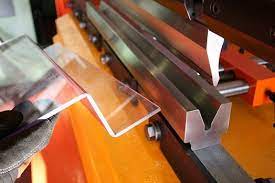Plastic bending techniques have revolutionized industries ranging from manufacturing to construction. The ability to bend plastic materials with precision has opened up new possibilities for designers, engineers, and craftsmen alike. In this comprehensive article, we will delve into the world of plastic bending, exploring various techniques and best practices that ensure successful and reliable results. Whether you are a seasoned professional or a novice, understanding these principles will empower you to work with plastics effectively.
Introduction to Plastic Bending
Before we dive into the techniques, it's crucial to understand what plastic bending is and why it matters.
What is Plastic Bending?
Plastic bending, often referred to as heat bending or thermoforming, is a process that involves the controlled application of heat to soften a plastic material, making it pliable. Once the plastic reaches its desired temperature, it can be bent into specific shapes and forms using molds, tools, or even by hand.
Applications of Plastic Bending
Plastic bending is widely used in various industries, including:
-
Signage and Displays: Creating custom signs, letters, and displays with intricate shapes and designs.
-
Automotive: Forming interior and exterior components like dashboards, light covers, and trim.
-
Medical: Manufacturing medical device enclosures and sterile packaging.
-
Packaging: Developing custom packaging solutions that conform to product shapes.
-
Architectural: Designing curved windows, skylights, and decorative elements.
Plastic Bending Techniques
Let's explore some of the most common plastic bending techniques used today:
1. Line Bending
Line bending, also known as V-groove bending, is a straightforward method used for bending straight lines in plastic sheets. Here's how it works:
-
Preparation: Mark the bending line on the plastic sheet. Create a V-groove along the marked line using a special heating element called a strip heater.
-
Heating: Place the plastic sheet on the strip heater, aligning the marked line with the groove. Heat the plastic until it becomes pliable but not melted.
-
Bending: Carefully fold the heated section along the groove to achieve the desired angle or shape. Use a bending jig to ensure precision.
2. Vacuum Forming
Vacuum forming is a versatile technique used for creating complex shapes and molds. The process involves these steps:
-
Heating: Heat a plastic sheet until it softens uniformly.
-
Molding: Place the heated sheet over a mold and apply a vacuum underneath. The plastic conforms to the shape of the mold as it is drawn downward.
-
Cooling: After forming, cool the plastic rapidly to set it in its new shape.
3. Drape Forming
Drape forming is suitable for creating curved or domed shapes. The process is as follows:
-
Heating: Heat the plastic sheet until it becomes pliable.
-
Draping: Drape the heated sheet over a mold or form, allowing it to conform naturally to the shape.
-
Cooling: Once the plastic has cooled and retained the desired shape, remove it from the mold.
4. Freehand Bending
For smaller projects or artistic creations, freehand bending is a technique where the plastic is heated and shaped by hand. It requires skill and experience to achieve precise results.
Best Practices for Plastic Bending
To ensure successful plastic bending, consider the following best practices:
-
Material Selection: Choose the right type of plastic for your project, as different plastics have varying melting points and properties.
-
Uniform Heating: Heat the plastic evenly to avoid inconsistencies or warping.
-
Use Proper Tools: Invest in high-quality bending jigs, strip heaters, or vacuum forming equipment for accurate results.
-
Safety First: Wear appropriate safety gear, including gloves and eye protection, as hot plastic can be hazardous.
-
Practice: If you are new to plastic bending, practice on scrap pieces to gain proficiency before working on your final project.
Conclusion
Plastic bending techniques offer endless possibilities for creativity and functionality in various industries. Whether you're a professional in need of precise plastic components or a hobbyist exploring new avenues of design, understanding these techniques and best practices is key to achieving outstanding results. Embrace the world of plastic bending and unlock a world of innovation in your projects.
For More Click on https://www.kuslaplastics.com/blogs/plastic-bending-techniques-practices


No comments yet